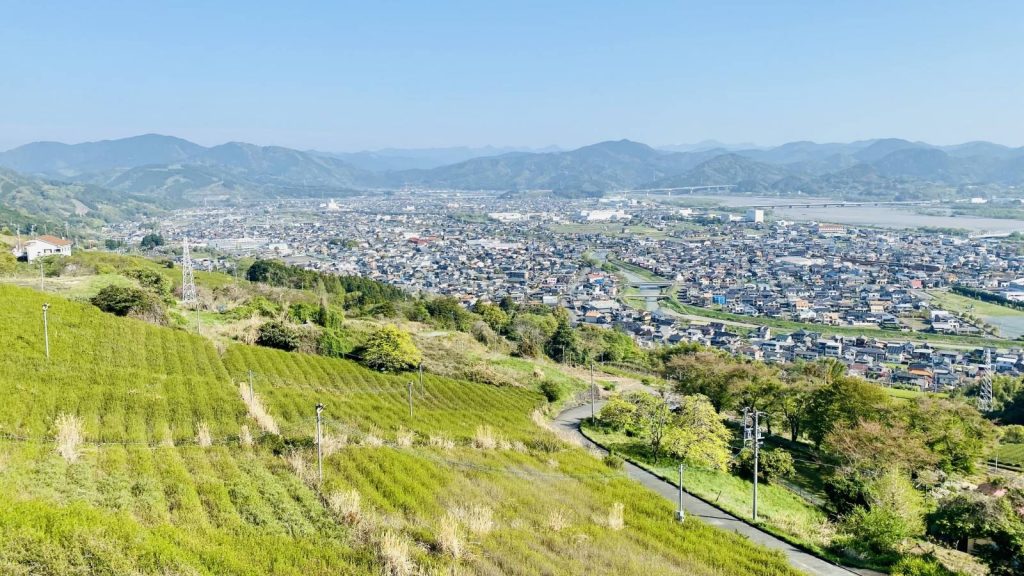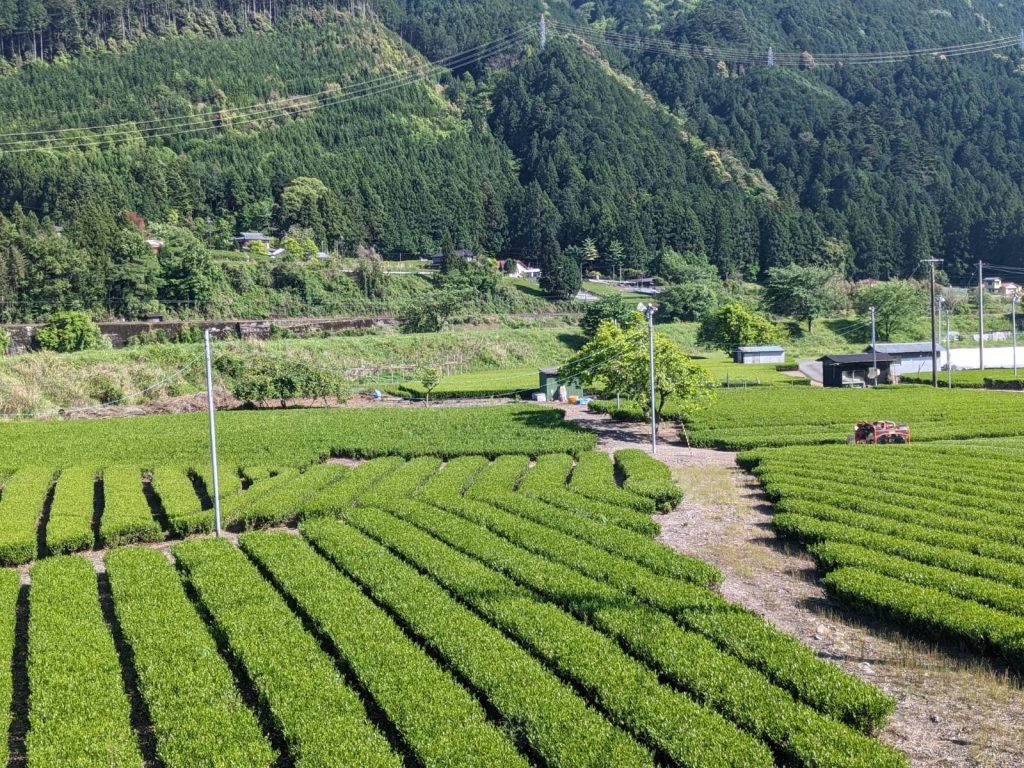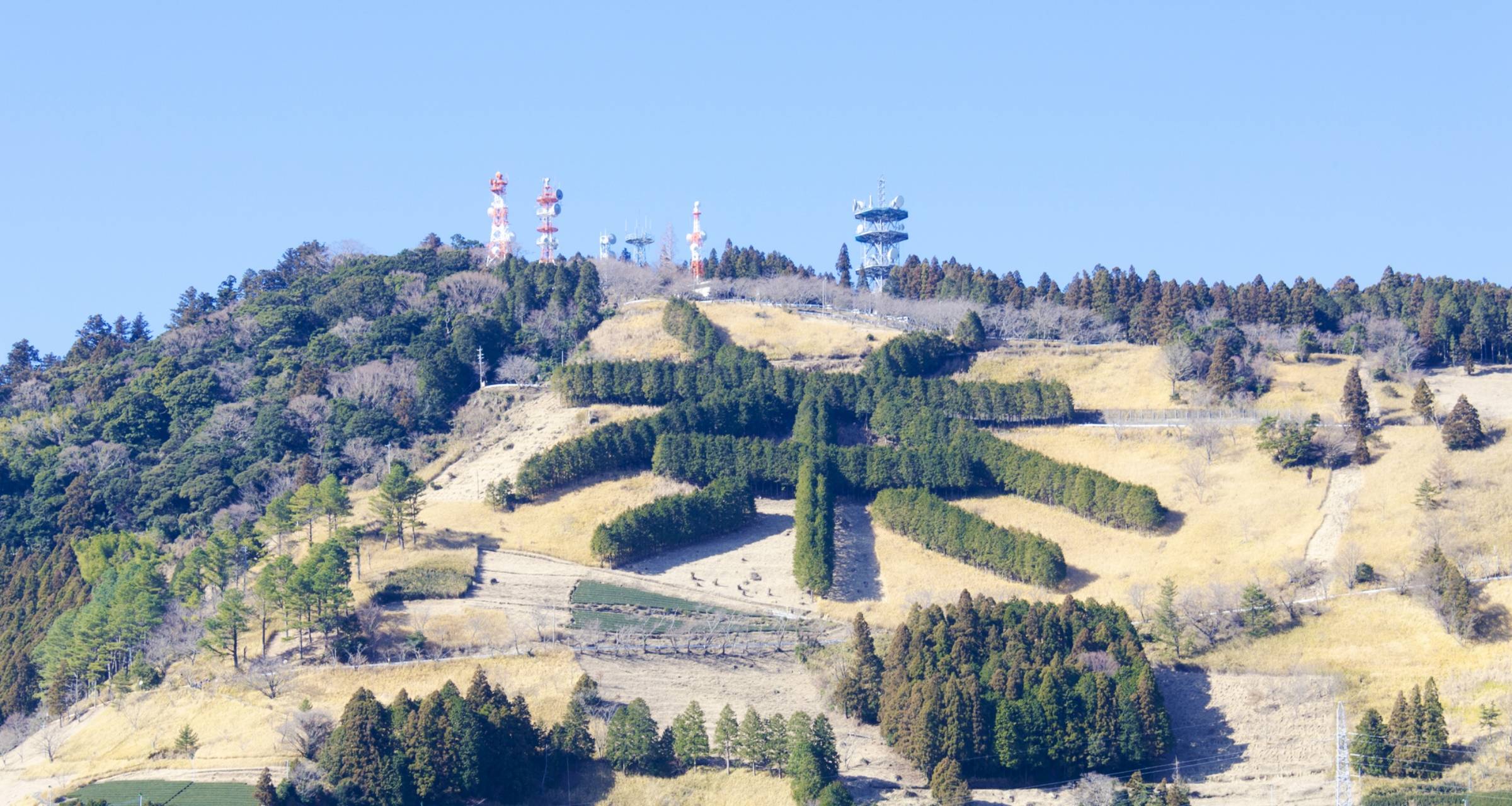In the morning, when the sun rises over Shimada City, the first place that its light reaches is the mountains off to the west of the city. When I first researched the city after I learned that I would be moving here, those mountains were one of the first landmarks that I noticed on the map. That is because high up on the mountainside, the giant kanji character 茶 is formed out of cedar trees. At that time, I did not know what the character meant, and I wondered why it was important enough to be written on a mountainside. Now, after five years of living in Shimada, I can look up and see the deep green kanji above the city and understand what it means and why it is there. The kanji, 茶, means “green tea,” and green tea is something that Shimada City and its neighboring cities take great pride in. I have climbed to the top of the mountain and enjoyed the beauty of the tea fields stretching out in all directions and Shimada City lying below. Many people probably think of Tokyo or Kyoto when they imagine Japan, but I think that I will always think of Shimada.

When I talk about Shimada City to people who have never visited it, I find that it’s usually easiest to explain it in terms of what it’s between: halfway between Shizuoka Prefecture’s population centers of Shizuoka City and Hamamatsu City; roughly halfway between Tokyo and Nagoya. It doesn’t have internationally known tourist destinations or famous people that would help it become well-known, but I think it has its own unique appeal.
In Shimada, there is no clear line of demarcation between city and nature. Tea fields and rice fields lie next to homes. Cranes and herons chase frogs and insects through the rice fields in the summer. Near the mountains at dusk, you can sometimes catch a glimpse of a hakubishin (a masked palm civet) slipping out of the tree line. Shimada lies on the banks of the wide Oi River. Its most famous landmark, Horai Bridge, was originally built to allow people from Shimada to cross over the river to the surrounding villages. As you cross the bridge, you can look out over the wide riverbed of the Oi River. And, on a clear day, you can see Mt. Fuji rising above the low mountains to the northeast. Once you cross the bridge’s 897 meter length, which holds a Guinness World Record, you find yourself in a forest with a narrow road that leads up the mountainside to a wide expanse of tea fields.

Horai Bridge is a beautiful spot to visit – which is also why it reaches the top of any list of recommended places to visit in Shimada. However, the history behind the bridge is even more interesting. A few hundred years ago, during the Edo period in Japan, Shimada was one stop along the Tokaido Road which led from Kyoto to Tokyo. For defensive purposes, the Tokugawa shogunate forbade a bridge from being built across the Oi River. To cross the river, it was necessary to wade or be carried across. After the Tokugawa shogunate was removed from power and their supporters began setting up tea farms in the areas around Shimada, Horai Bridge was finally built to make movement easier. Today, a small tea shop has been built nearby so people can enjoy Shimada’s green tea as they look out over the bridge.
Shimada’s main crop is unquestionably green tea. Even as you exit Shimada Station, you are greeted by a sign that says “Welcome to Shimada, Green Ci-tea.” Whenever I see that sign, I imagine the PR staff in Shimada City Hall having a good chuckle at their own cleverness. That motto is just one part of Shimada’s campaign to share their green tea with more people. From the Fujinokuni Tea Museum to the recently opened Kadode Oigawa train station with its large tea shop, the places where Shimada’s green tea can be enjoyed are always increasing. It is easy to understand why 茶 was so important as to be written on a mountainside.

Shimada will probably never become one of the most famous cities in Japan, but it has its own unique charms. During my time here, I have found many things to love about it, and I have formed deep connections with its people, who have eagerly shared the best of their city with me. To me, Shimada will always be my favorite part of Japan.

- Emily
-
Emily Drews works as an English teacher in Shimada, Shizuoka Prefecture. She enjoys writing and translating.
She is originally from Wisconsin in the United States.
